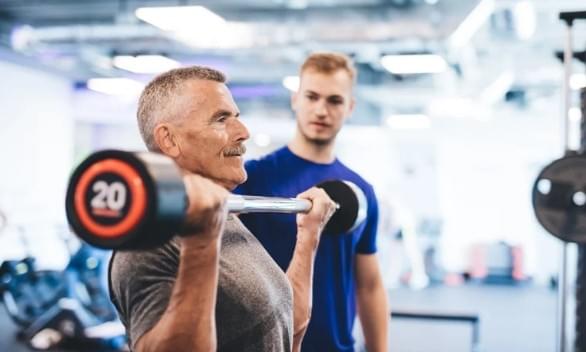How to Naturally Raise Testosterone (and Why It Matters as You Age)

Testosterone supports far more than libido: it helps maintain muscle and bone, red-blood-cell production, insulin sensitivity, mood, and overall vitality. Levels generally decline with age, which is one reason midlife can feel like the energy dial has been nudged down. If you have symptoms—low libido, erectile issues, fatigue, fewer morning erections, or loss of muscle or bone—get morning, fasting labs and repeat any abnormal result before chasing hacks. Leading guidelines emphasize diagnosing hypogonadism only when symptoms and consistently low testosterone are both present, followed by shared decision-making if treatment is indicated. Oxford AcademicAUA
Sleep is a major lever. In a controlled study, healthy men restricted to five hours per night for a week experienced a roughly 10–15% drop in daytime testosterone compared with their well-rested baseline. Prioritizing a regular seven to nine hours, cooling and darkening the room, and trimming late caffeine and alcohol is a simple, high-yield starting point. PubMed Central
Body composition is another powerful lever. Systematic reviews show that losing excess fat—especially visceral fat—is consistently associated with higher testosterone in men with overweight or obesity, and the magnitude of the rise tends to track with the amount of weight lost. Aim for sustainable fat loss with ample protein and regular resistance training to preserve lean mass. PubMed
Training itself pays off even if it doesn’t dramatically lift your resting testosterone number. Meta-analyses indicate that resistance and aerobic training have negligible effects on baseline testosterone in eugonadal, insufficiently active men—but they reliably improve lean mass, fat mass, and insulin sensitivity, which are what you actually feel. Three strength sessions and one or two short interval days per week is a solid, sustainable template. PubMedSpringerOpen
Keep nutrition balanced rather than extreme. Very low-fat diets have been associated with lower testosterone in controlled trials, whereas most men do better with sufficient protein, colorful plants, carbohydrates placed around training, and a mix of mono- and some saturated fats from whole foods (e.g., eggs, olive oil, oily fish, dairy if tolerated). Correct deficiencies rather than megadosing supplements: vitamin D repletion is reasonable when you’re low, but randomized trials show mixed or null effects on testosterone overall; zinc clearly matters when deficient; and magnesium may give a small nudge, particularly in active men. Be wary of “testosterone booster” blends like ZMA; they haven’t held up under controlled testing. Oxford AcademicPubMed+1Lippincott Journals
Lifestyle cleanup helps too. Heavy, chronic alcohol intake is linked with suppression of the gonadal axis; keep intake moderate with alcohol-free days each week. If you’re on long-term opioids, know they commonly suppress testosterone—do not stop any medication on your own, but discuss options with your clinician if you have symptoms. Finally, reduce avoidable exposure to endocrine-disrupting chemicals (for example, certain phthalates) by avoiding hot food in plastic and choosing phthalate-free personal-care products; observational cohorts have associated higher urinary phthalates with lower testosterone in adult men. BioMed CentralPubMedOxford Academic
If repeated morning tests confirm low testosterone and your symptoms line up, talk with your clinician about treatment. In large randomized data sets of appropriately selected men, testosterone therapy corrected anemia more frequently than placebo—useful, targeted benefit—but treatment still requires careful monitoring and isn’t a substitute for lifestyle. PubMed Central
🔬 Science Spotlight
Sleep restriction: One week at ~5 hours/night cut daytime testosterone by ~10–15% in healthy men; recovery follows with adequate sleep. [1] PubMed Central
Weight loss: In men with overweight/obesity, greater fat loss typically yields larger rises in testosterone; bariatric and lifestyle interventions both show this direction of effect. [2] PubMed
Training vs. resting T: Exercise improves the body you carry your hormones in—lean mass, fat mass, insulin sensitivity—while baseline testosterone often changes little. [3] PubMed
Environmental exposures: Population studies link higher urinary phthalate metabolites with lower testosterone in adult and older men—practical reason to reduce plastic exposure. [4] Oxford Academic
Treatment where appropriate: In the TRAVERSE anemia analysis (5,204 hypogonadal men), testosterone therapy corrected anemia more often than placebo. [5] PubMed Central
References
Leproult R, Van Cauter E. Effect of 1 week of sleep restriction on testosterone levels in young healthy men. J
AMA. 2011;305(21):2173–2174. PubMed Central
Meeker JD, Ferguson KK. Urinary phthalate metabolites and serum testosterone in men (NHANES 2011–2012). J Clin Endocrinol Metab. 2020;105(4):e1225–e1234. Oxford Academic
Pencina KM, et al. Efficacy of testosterone therapy in correcting anemia among men with hypogonadism (TRAVERSE Anemia). JAMA Netw Open. 2023;6(11):e2341496. PubMed Central
Bhasin S, et al. Testosterone therapy in men with hypogonadism: Endocrine Society clinical practice guideline. J Clin Endocrinol Metab. 2018;103(5):1715–1744. Oxford Academic
Lerchbaum E, et al. Vitamin D and testosterone in healthy men: a randomized trial. J Clin Endocrinol Metab. 2017;102(11):4292–4302. Oxford Academic
Whittaker J, et al. Low-fat diets and testosterone in men: systematic review and meta-analysis. Nutrition. 2021;83:111024. ScienceDirect
Bianco A, et al. Alcohol consumption and hormonal alterations related to muscle hypertrophy. Nutrition & Metabolism. 2014;11:26. BioMed Central
Bottom line
